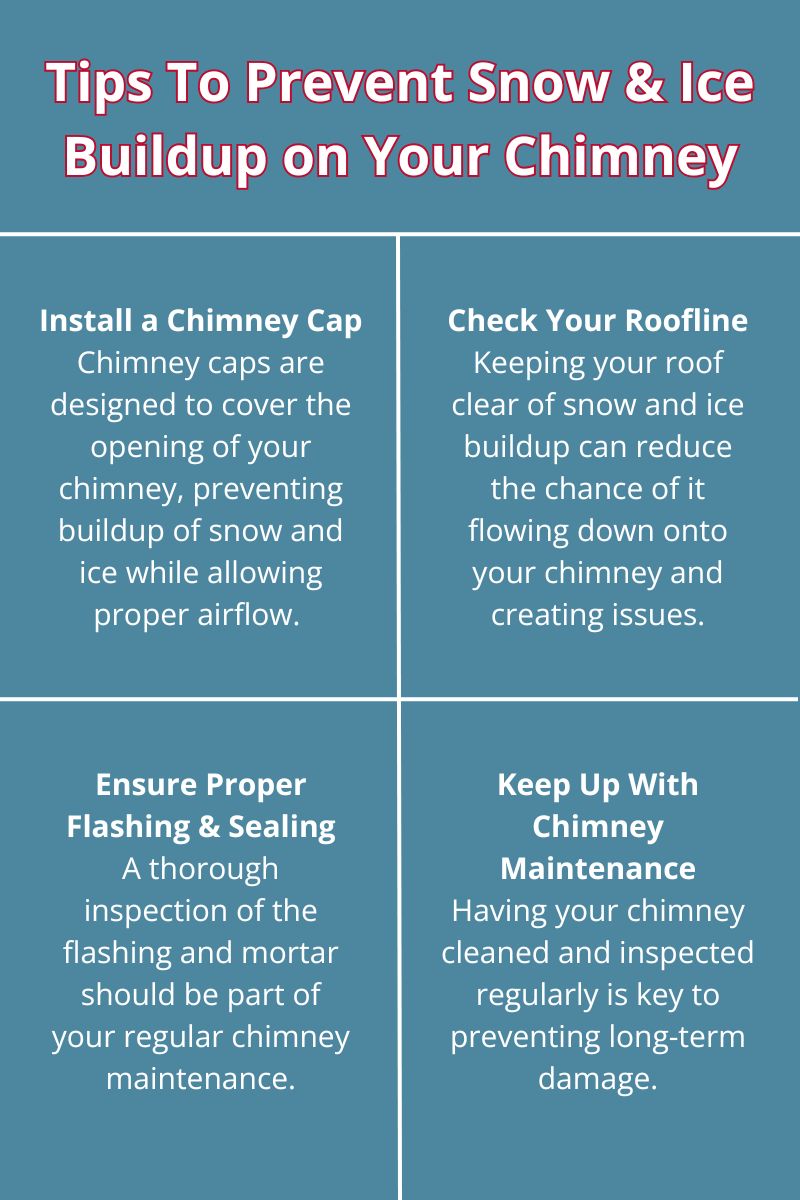Snow and ice can bring beauty to the world around us, but they can also cause hidden damage to your chimney and fireplace. While many homeowners enjoy a cozy fire during colder months, it’s essential to consider how ice and snow can impact your chimney’s performance and overall structure.
As temperatures drop and snow piles up, your chimney becomes vulnerable to the effects of freezing conditions, which can lead to pricey chimney repairs and dangerous situations if left unchecked.
Smalling Masonry understands the challenges that come with winter weather in Indianapolis, and we’re here to help you protect your chimney and ensure it stays in top shape. Our experts can assist with everything from ice and snow removal to preventive measures that keep your system functioning properly all year round.
For more information, call Smalling Masonry today at 317-903-8121 or click here to contact us online.
Is Snow or Ice on My Chimney Dangerous?
While snow and ice can be pretty to look at, they can also cause significant damage if they accumulate on your chimney. The main concern with snow and ice buildup on your chimney is the potential for water intrusion, which can cause long-term problems. When snow melts and then refreezes, it can create ice dams, which block the flow of air through your chimney, leading to a host of issues. Ice dams can also cause cracks in the mortar and brick of your chimney, eventually weakening the structure.
Excessive ice or snow buildup can also clog your chimney’s flue, making it more difficult for smoke and gases to exit your home. This can lead to dangerous situations, such as carbon monoxide accumulation inside your living space. In addition to creating a fire hazard, frozen chimneys can also make it more difficult for you to enjoy your fireplace or stove, limiting the comfort of your home.
While it’s unlikely that snow or ice will completely block your chimney in most cases, it can still cause damage over time. Small cracks, mortar degradation, and water infiltration can all lead to bigger issues that require extensive repairs. So, while ice and snow may not always pose an immediate danger, it’s wise to monitor your chimney and address any buildup that may occur.
How Do I Safely Remove Snow & Ice From My Chimney?
If you notice snow or ice buildup on your chimney, it’s important to address it. However, removing snow and ice from your roof and chimney can be hazardous. Climbing onto your roof to clear snow and ice is risky without the proper equipment and training. The roof can be slippery, and working at heights presents a range of dangers, from falls to injury, especially in freezing conditions.
It’s always best to hire a professional to handle snow and ice removal from your chimney.
Trained technicians have the right tools and experience to clear the buildup without causing harm to the chimney or to themselves. Additionally, a professional can inspect your chimney during the removal process to identify any existing damage or potential issues that could escalate.
How Can I Prevent Snow & Ice Buildup on My Chimney in the Future?
The best way to protect your chimney from ice and snow damage is to take preventive measures that reduce the risk of buildup in the first place. A few steps can go a long way in keeping your chimney functioning properly:

- Install a chimney cap. A high-quality chimney cap can help prevent snow, ice, and debris from entering your chimney in the first place. Chimney caps are designed to cover the opening of your chimney, preventing buildup of snow and ice, while still allowing proper airflow. This simple investment can save you money on fireplace repairs and maintenance down the line.
- Keep up with chimney maintenance. Having your chimney cleaned and inspected regularly is key to preventing long-term damage. A professional chimney sweep can remove debris and buildup that can contribute to ice dams and water infiltration. Routine chimney maintenance also helps identify cracks or weaknesses that could become problematic in freezing temperatures.
- Ensure proper flashing and sealing. Water infiltration can cause significant damage, especially in areas where snow and ice are prevalent. Making sure your chimney’s flashing is intact and properly sealed will help keep moisture out. A thorough inspection of the flashing and mortar should be part of your regular chimney maintenance routine.
- Check your roofline. A buildup of ice and snow on the roofline above your chimney can trickle down and cause problems. Keeping your roof clear of snow and ice buildup can reduce the chance of it flowing down onto your chimney and creating issues.
Protect Your Chimney With Smalling Masonry
Indianapolis winters bring plenty of cold days, and a well-maintained chimney is key to keeping a home warmer and cozier. But when snow and ice settle on the chimney, problems can arise that affect both performance and longevity. From potential structural issues to efficiency concerns, understanding the effects of ice and snow on chimney masonry is essential.
The good news is that keeping a chimney in top condition throughout the winter months doesn’t have to be a hassle. Smalling Masonry is here to help Indianapolis homeowners keep their chimneys in great shape, no matter what the forecast looks like.
Call us now at 317-903-8121 or schedule online today.
